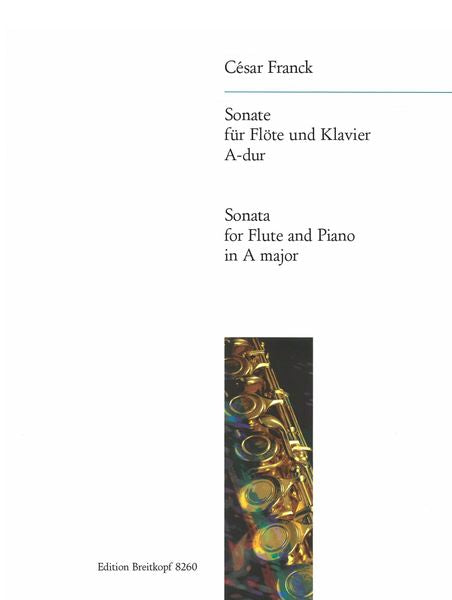Syrinx Music
Franck - Sonata Arranged For Flute & Piano by Peter -Lukas Graf
Franck - Sonata Arranged For Flute & Piano by Peter -Lukas Graf
Couldn't load pickup availability
Description:
Cesar Franck (1822-1890) exercised an unusually strong influence on the French music of his time and on that of following generations, both as a composer and teacher. He generated stylistically formative Impulses by focussing on absolute instrumental music, by integrating contrapuntal compositional techniques into the Romantic musical idiom, and by displaying a tendency to base his works, even those in sonata or symphonic form, on one single theme. Also typical of Franck's major works are bold chromatic modulations within extremely narrow limits - which purportedly prompted Debussy to call Franck a "modulation machine". Only few of Cesar Franck's numerous works have found a firm footing in todays concert repertoire, although his oeuvre includes a number of pieces for piano and organ, symphonic poems, several oratorios, two operas, songs and chamber music. But although few in number, his regularly performed works are very popular: the D-minor Symphony, the "Variations symphoniques" for piano and orchestra, several organ and piano works and the A-major Sonata for violin and piano.
This work was written in 1886 and dedicated to the Belgian violinist Eugene Ysaye (1858-1931). It soon became a standard repertoire piece of all violin virtuosos. The first transcription - a version for violoncello and piano - was apparently even published during the composer's lifetime. Although Franck's approval of this arrangement has only been passed on by word of mouth, cellists are only too eager to believe the truth of this allegation. Flutists too can also lay claim to a relatively early version for their Instrument. Of course it is a moot point whether such arrangements of successful pieces for different solo instruments actually concur with the composer's intentions. The performer must appeal to his own judgement in determining the legitimacy of the arrangement, whereby he should always ask himself whether the newly won "color" of the transcription justifies the loss of the original sound conception. In our particular case, the flutist must also ask himself whether he is able to meet the expressive demands required from the violin. In view of the ever greater proficiency of flutists, this criterion will undoubtedly acquire more and more importance. The score of this new edition was revised on the basis of Cesar Francks autograph (in the Pierpont Morgan Library, New York). The tempo, articulation and dynamic markings were reproduced as faithfully as possible. Missing accidentals were tacitly added, and editorial indications placed in brackets.
The emendations made by the editor have not been pointed out in the separate solo part. However, they can be easily identified by comparing the part with the score. We would like to draw attention to the original articulation in the second movement, bars 34ffff and 158ff., which is ignored by the majority of perfonners (even by Adolf Busch). The non-legato and the phrase endings with short eighth notes (instead of quarter notes) represent a fundamental musical variant, which is all the more valuable when considering that the flutist has already had to forgo the lower octave at the first entrance.
Basel, Spring 1988


